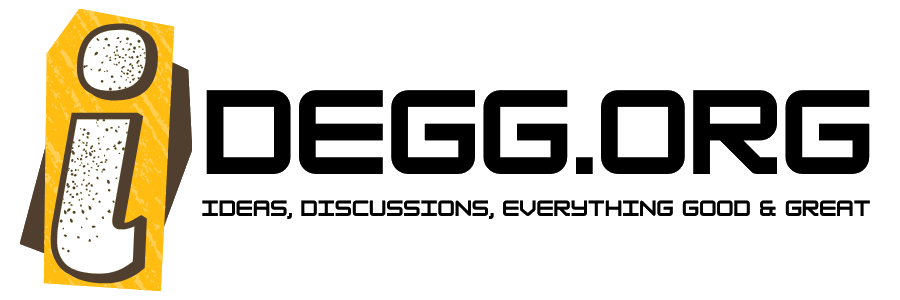In today’s digital landscape, creating a powerful brand for your online business is crucial for standing out in a crowded market. Your brand is more than just a logo or a catchy tagline – it is the identity of your business, the promise you make to your customers, and the experience you deliver. Building a strong, recognizable, and trustworthy brand can help you foster customer loyalty, attract new clients, and grow your business in a sustainable way. Here’s a step-by-step guide on how to build a powerful brand for your online business:
1. Define Your Brand Purpose
The first step in building a powerful brand is identifying your brand’s purpose. Why does your business exist? What problem does it solve, and how is it different from competitors? Having a clear and compelling brand purpose gives your business direction and connects with your target audience on an emotional level.
Ask yourself:
- What is the mission of my business?
- What values guide my decisions and actions?
- How do I want to improve the lives of my customers?
2. Know Your Target Audience
Understanding your target audience is essential for shaping your brand. A powerful brand resonates deeply with the people it serves. Research your audience to discover their needs, preferences, and pain points. Create buyer personas to represent different segments of your audience, detailing their demographics, interests, and online behaviors.
This helps you to:
- Tailor your messaging to speak directly to your audience.
- Choose the right platforms to reach your audience.
- Design products or services that meet their specific needs.
3. Develop a Strong Brand Identity
Your brand identity includes your business name, logo, color schemes, typography, and overall aesthetic. It should visually communicate your brand’s values and personality. Consistency in your brand identity across all online platforms – website, social media, ads, email campaigns – helps reinforce brand recognition.
- Logo: Design a logo that is simple, memorable, and reflects your business’s core values.
- Color Scheme: Choose a color palette that evokes the right emotions. For example, blue often conveys trust, while red symbolizes energy.
- Typography: Use fonts that align with your brand’s personality. A luxury brand might use elegant, sophisticated fonts, while a playful brand may opt for casual, fun typefaces.
4. Craft Your Brand Voice and Messaging
Your brand voice is how your business communicates with its audience, while your messaging reflects your core values and selling propositions. A consistent brand voice helps build trust and familiarity. Determine if your brand tone will be formal, conversational, fun, or authoritative based on what resonates with your audience.
- Tagline: Create a concise and compelling tagline that sums up your brand’s essence.
- Messaging: Clearly articulate your unique selling proposition (USP) and key benefits that differentiate your business from competitors.
5. Build a User-Centered Website
Your website is often the first impression customers will have of your brand, so it needs to be polished, easy to navigate, and reflective of your brand identity. Focus on creating a user-friendly experience with intuitive design, fast loading times, and mobile responsiveness.
- Homepage: Your homepage should immediately communicate who you are, what you do, and why you’re different.
- Brand Story: Share your brand’s story on an “About” page to build a personal connection with your audience.
- Consistency: Maintain consistency in your brand’s visual identity and messaging across every page.
6. Leverage Social Media for Brand Awareness
Social media is one of the most effective ways to build and amplify your online brand. It allows you to engage directly with your audience, showcase your products or services, and build a community around your brand. Use platforms where your target audience spends the most time and tailor your content accordingly.
- Content Strategy: Share valuable, relevant, and engaging content that aligns with your brand values.
- Visuals: Use visually cohesive images, videos, and graphics that match your brand’s aesthetic.
- Engagement: Respond to comments and messages, run polls, and encourage user-generated content to foster loyalty.
7. Deliver Consistent Brand Experience
Consistency is key to building a memorable and powerful brand. Customers should have the same experience whether they visit your website, see your social media posts, or interact with customer service. Consistency in your messaging, tone, and customer interactions will strengthen your brand’s credibility.
8. Provide Exceptional Customer Service
Your brand is built not just on what you say, but on what you do. Excellent customer service is one of the best ways to build a strong reputation and foster customer loyalty. When customers feel valued and supported, they are more likely to return and recommend your business to others.
- Respond promptly: Be quick to address customer questions and concerns.
- Personalize the experience: Tailor your interactions based on customer preferences and behaviors.
- Exceed expectations: Go the extra mile to make your customers feel special.
9. Monitor and Evolve Your Brand
As your online business grows, your brand should evolve to stay relevant. Continuously monitor how your brand is perceived by customers, competitors, and in the marketplace. Use feedback to make adjustments and keep your brand fresh.
- Gather Feedback: Regularly survey your customers to understand their evolving needs and how well your brand aligns with them.
- Analyze Metrics: Track metrics like website traffic, social media engagement, and customer retention to measure the success of your branding efforts.
Conclusion
Building a powerful brand for your online business takes time, strategy, and consistent effort. By defining a strong purpose, knowing your audience, developing a cohesive brand identity, and delivering exceptional experiences, you can create a brand that stands out and resonates with your customers. A well-established brand not only drives customer loyalty but also lays the foundation for long-term business success.

I’m passionate writer and digital content creator with a background in journalism. With a keen interest in exploring a wide range of topics—from technology to lifestyle and beyond—I bring fresh insights and thought-provoking commentary to the readers of Idegg.org. My curiosity and love for storytelling makes me a perfect fit for sharing the diverse, ever-evolving content the blog is known for.

